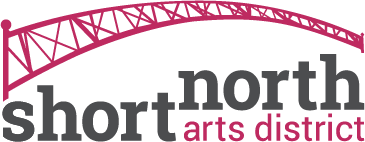Parade As A Protest Artform
07/01/2023 - 08/04/2023
12:00 am
Categories
ON VIEW: Short North Tavern
HOURS : Mon-Fri // 3PM-2:30AM Sat-Sun // 12:30PM-2:30AM
These photographs document the Anti-Censorship Demonstration at the Columbus Ohio July 4th 1990 Doo Dah Parade. A group of art students, artists, arts professionals and the art-loving public organized a fun and passionate protest directed at the U.S. Senator Jessie Helms led censuring take-down of National Endowments for the Arts funding. The demonstration was visually and performatively engaging while at the same time, expressed a need for protecting our First Amendment civil rights in a loud and provocative way.
Actions taken by Jesse Helms and others in the U.S. Senate targeted artists whose work explored religion, sexual-racial identity and feminist gender expression, queer culture, and the AIDS crisis.
The Anti-Censorship Demonstration led Columbus’ Doo-Dah parade that year. It dominated its tenor and tone. It was well received by a supportive crowd lining High Street in Columbus’ Short North neighborhood.
The Columbus Anti-Censorship Demonstration was unique in that it was clearly a political action advocating for our collective civil rights, but its form was performative and visually artistic in nature.
This confluence of art and politics into one expression stands out among similar demonstrations being held around the country in defense of the touring “Perfect Moment” Robert Mapplethorpe exhibition

